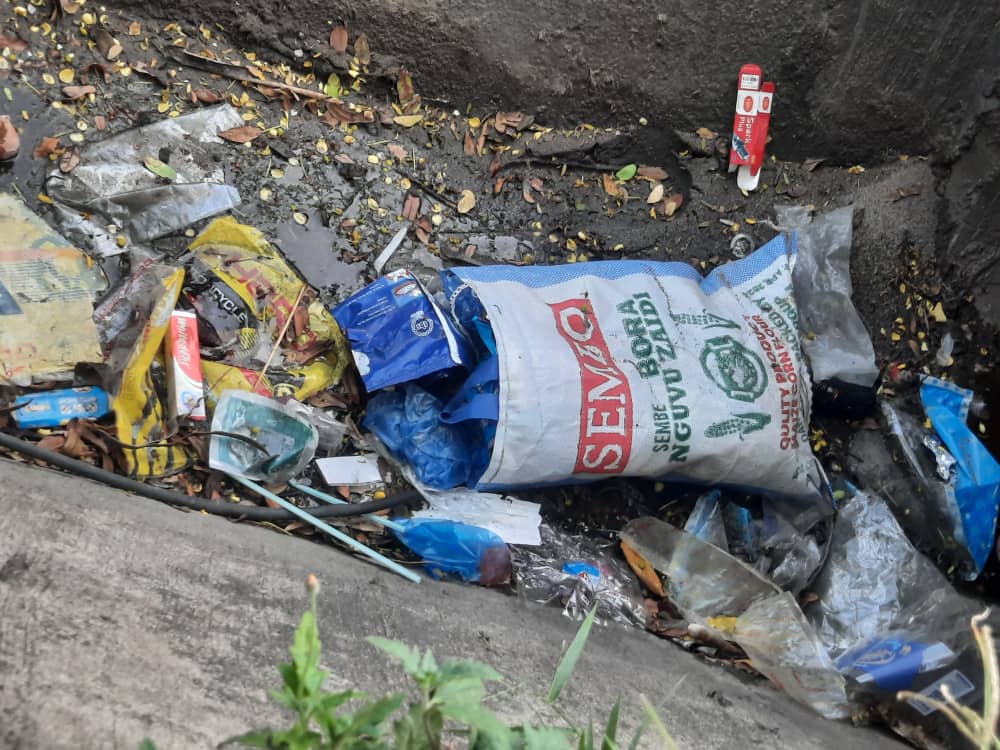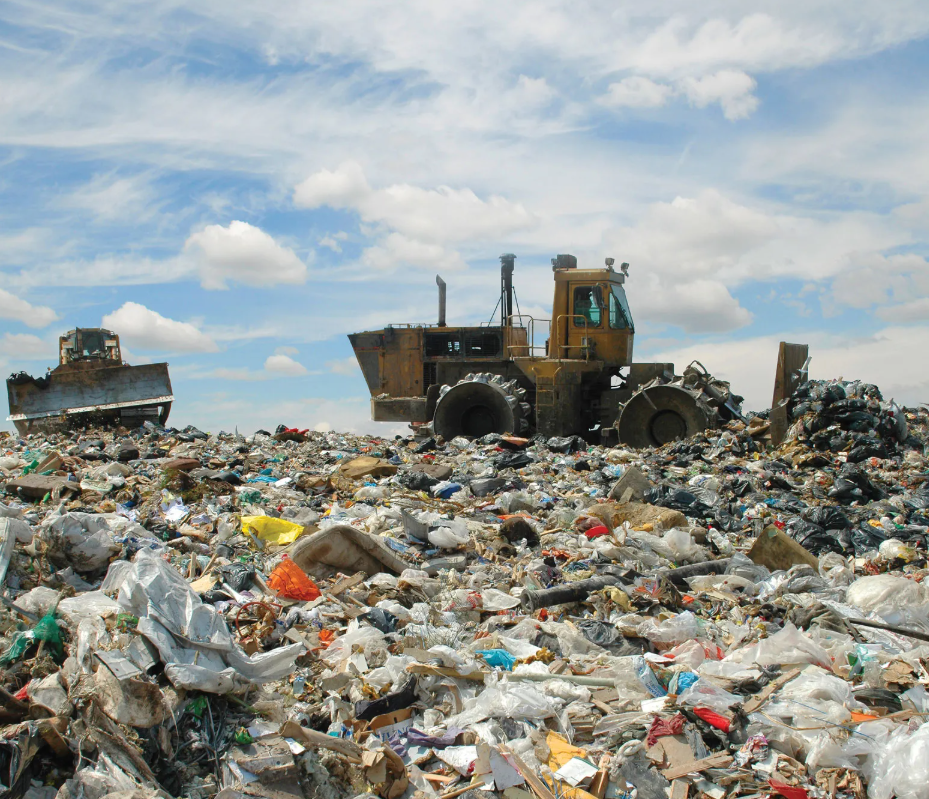Dar es Salaam. “Food waste that is sent to final disposal sites, decomposes, releasing methane—one of the most potent greenhouse gases (GHGs),” says Dr Rebecca Parrish, a climate change resilience expert with Dar es Salaam Urban Resilience Project (DURP).
She added that other sources of emissions include waste burning, while waste transportation within and around the city also contributes due to the fossil fuels burned by waste vehicles.
Rebecca Parrish’s statement highlights the dangers posed by waste generation and how it is managed in our municipalities.
Further, studies show that food waste is a significant contributor to greenhouse gas (GHG) emissions. According to the Food and Agriculture Organization (FAO), food waste is responsible for approximately 8 percent of all human-made GHG emissions globally.
FAO estimates that approximately 1.3 billion tons of food are wasted globally each year, resulting in nearly 3.3 billion tons of greenhouse gas emissions.
In Tanzania, solid waste generation ranges between 14.4 million and 20.7 million tonnes per year, according to the Vice President’s Office responsible for the environment. This translates to an average of 241 kg to 347 kg per person annually.
Regarding waste composition, statistics from the Vice President’s Office indicate that 63.4 percent of solid waste consists of organic materials, including food and fruit waste. Plastic waste accounts for 12 percent, paper for 6.1 percent, glass for 4.2 percent, and metals for 1.5 percent.
Urban areas contribute more to waste generation than rural areas, with a significant portion of waste being dumped in landfills.
Specifically, the Dar es Salaam Urban Resilience Project (DURP) 2024, funded by the UK government, reports that Dar es Salaam, with a population of over five million, generates approximately 5,300 tons of mixed solid waste daily from various sources.
Challenges in managing organic waste in Dar es Salaam
Investigations in various areas have revealed that many residents and waste producers lack adequate knowledge on how to manage organic waste. As a result, they often mix it with other types of waste or leave it to be collected by municipal trucks and taken to dumpsites.
Elizabeth Mlowe, a resident of Mbezi in Dar es Salaam, says she collects her waste in bags, which are then picked up by municipal trucks or individuals who collect waste for a small fee.
“In this area (Mbezi-Maduka Tisa), you might not see a municipal truck for an entire month. Since organic waste decomposes quickly, you can’t keep it for long. There’s an elderly man who passes by, and we give him the waste. He charges between Sh500 and 2,000 per sack,” she said.
Mariam Hassan, a food vendor in Vingunguti, Ilala, says the waste they generate is collected by municipal trucks, which only pass through their streets once a week.
Municipalities in the city need resources, capacity and support to improve food waste management to address the national climate related goals.
Waste management in markets
A report by the Dar es Salaam Urban Resilience Programme (DURP) completed in early 2024 highlights waste management issues in the city’s three largest fruit and vegetable markets Ilala Boma, Buguruni, and Mabibo which collectively generate 55 tons of organic waste daily.
These markets follow three different waste collection and transportation systems. In Mabibo, a private company handles waste collection.
“In Buguruni, municipal staff are deployed for waste collection, but a significant portion of the waste is transported to the Mabwepande Compost Plant using a skip container,” the report notes.
According to the report and further investigations, waste generated in Ilala and Mabibo markets is transported to the Pugu dumpsite.
Furahisha Kambi, secretary of the Buguruni market traders, pointed out another challenge: “There is no designated waste storage area. Most of the time, waste is only taken to the truck when the collection vehicle arrives.”
At the Tazara-Veterinary market in Ilala, waste is dumped in an open area without separation. Kashinde Rajabu, a trader at the market, said they pay young men to collect the waste and put it at the collection point. Municipal trucks then pick up the waste and transport it to dumpsites.

Waste that can be recycled
According to the Vice President’s Office, while 70 percent of the solid waste produced can be recycled, only 5 to 10 percent is currently being processed. Most recycling efforts focus on plastics, paper, scrap metal, aluminum, glass, and electronic waste.
Furthermore, municipal councils only manage to collect between 45 and 50 percent of the total waste, leaving more than half of it in the environment, where it poses serious risks to public health and ecosystems.
Climate change and waste
Boniface Kyaruzi, an environmental engineer at the National Environment Management Council (NEMC), explains that food waste releases methane, one of the greenhouse gases that contribute to climate change.
Rebecca Parrish, a climate change resilience expert, adds that improper waste disposal leads to clogged drainage systems, increasing the risk of urban flooding, especially in cities like Dar es Salaam.
“Climate change worsens this by altering rainfall patterns, making heavy storms and droughts more frequent. Droughts harden the soil, reduce vegetation, and degrade land, further increasing flood risks when the rains return,” she explains.
Additionally, rising temperatures and extreme weather conditions contribute to food spoilage, increasing food waste. Flooding also disrupts sanitation systems, while climate change alters disease patterns, increasing health risks associated with poor waste management.
Proposed solutions
Kyaruzi suggests waste minimization as a key solution.
“In Mabwepande, we have a composting facility that, if fully utilized, could process up to 50 tons of organic waste per day,” he says, adding that food leftovers could also be repurposed as animal feed to reduce greenhouse gas emissions.
Geophrey Zenda, Principal Environmental Health Officer for Waste Management and Sanitation at Ilala Municipal Council, agrees that food waste from households, markets, and restaurants can be repurposed for animal feed, even at a small scale.
“At home, you can set up a bucket with food scraps, drill holes at the bottom, and allow insects to breed. This helps manage organic waste effectively,” he explains.
Rebecca Parrish notes that DURP provided solutions, in collaboration with local and international partners, and has conducted research to improve waste management and mitigate climate risks.
“By enhancing waste collection, segregation, and recycling while promoting composting, the city can become cleaner and healthier while also cutting greenhouse gas emissions. Improved waste management will help prevent urban flooding and other climate shocks,” she says.
She adds that DURP has explored various solutions, including IT-driven innovations for waste collection, increasing investment opportunities, strengthening waste policies, and integrating small recyclers into major projects.
“Specific food waste solutions include diverting organic waste from manufacturers to processing facilities, improving market waste infrastructure, and encouraging community composting,” she says.
Parrish also emphasizes the importance of inclusivity, ensuring that informal waste workers, women, and people with disabilities benefit from waste management solutions.
“Community initiatives like Africraft, which repurpose waste into art and household products, are also growing,” she concludes.
E


